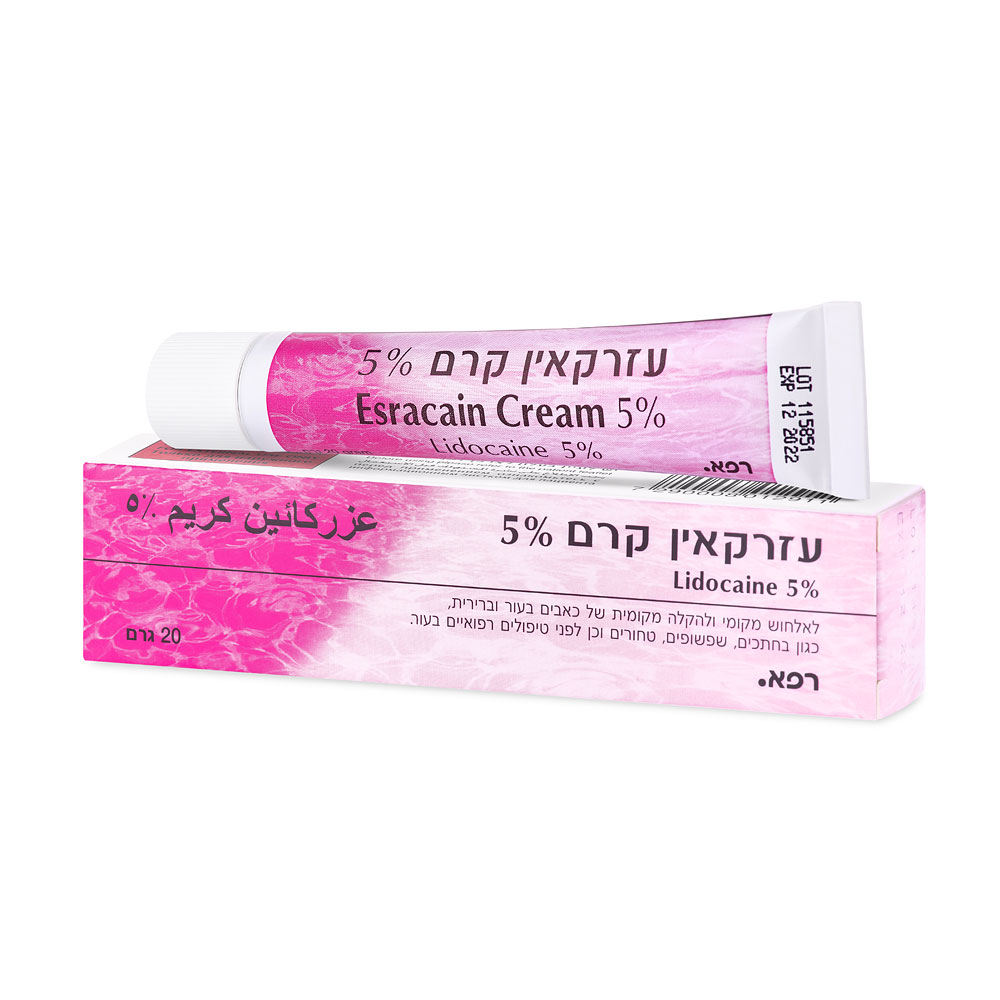Quest for the right Drug

עזרקאין קרם % 5 ESRACAIN CREAM 5 % (LIDOCAINE)
תרופה במרשם
תרופה בסל
נרקוטיקה
ציטוטוקסיקה
צורת מתן:
חיצוני : TOPICAL
צורת מינון:
קרם : CREAM
עלון לרופא
מינוניםPosology התוויות
Indications תופעות לוואי
Adverse reactions התוויות נגד
Contraindications אינטראקציות
Interactions מינון יתר
Overdose הריון/הנקה
Pregnancy & Lactation אוכלוסיות מיוחדות
Special populations תכונות פרמקולוגיות
Pharmacological properties מידע רוקחי
Pharmaceutical particulars אזהרת שימוש
Special Warning עלון לרופא
Physicians Leaflet
Adverse reactions : תופעות לוואי
8 ADVERSE REACTIONS 8.1 Adverse Reaction Overview Adverse experiences following the administration of lidocaine are similar in nature to those observed with other amide local anesthetic agents. These adverse experiences are, in general, dose-related and may result from high plasma levels caused by overdosage or rapid absorption, or may result from a hypersensitivity, idiosyncrasy or diminished tolerance on the part of the patient. Serious adverse experiences are generally systemic in nature. 8.2 Post-Market Adverse Reactions The following adverse reactions are those most commonly reported: Central Nervous System: CNS manifestations are excitatory and/or depressant and may be characterized by the following signs and symptoms of escalating severity: circumoral paresthesia, light-headedness, nervousness, apprehension, euphoria, confusion, dizziness, drowsiness, hyperacusis, tinnitus, blurred vision, vomiting, sensations of heat, cold or numbness, twitching, tremors, convulsions, unconsciousness, respiratory depression and arrest. The excitatory manifestations (e.g., twitching, tremors, convulsions) may be very brief or may not occur at all, in which case the first manifestation of toxicity may be drowsiness merging into unconsciousness and respiratory arrest. Drowsiness following the administration of lidocaine is usually an early sign of a high lidocaine plasma level and may occur as a consequence of rapid absorption. Cardiovascular System: Cardiovascular manifestations are usually depressant and are characterized by bradycardia, hypotension, arrhythmia and cardiovascular collapse, which may lead to cardiac arrest. Allergic: Allergic reactions are characterized by cutaneous lesions, urticaria, edema or, in the most severe instances, anaphylactic shock. Allergic reactions of the amide type are rare (<0.1%) and may occur as a result of sensitivity either to the local anesthetic agent or to other components in the formulation (See 6 DOSAGE FORMS, STRENGTHS, COMPOSITION AND PACKAGING). Esracain® Cream 5% contains cetyl alcohol, which may cause local skin reactions (e.g. contact dermatitis). Esracain® Cream 5% contains propylhydroxybenzoate and methylhydroxybenzoate, which may cause allergic reactions (possibly delayed) (see 7.1 WARNINGS AND PRECAUTIONS, General). Reporting of suspected adverse reactions Reporting suspected adverse reactions after authorisation of the medicinal product is important. It allows continued monitoring of the benefit/risk balance of the medicinal product. Any suspected adverse events should be reported to the Ministry of Health according to the National Regulation by using an online form: https://sideeffects.health.gov.il

שימוש לפי פנקס קופ''ח כללית 1994
Topical anesthesia in local skin disorders & mucous membranes
תאריך הכללה מקורי בסל
01/01/1995
הגבלות
תרופה שאושרה לשימוש כללי בקופ'ח
מידע נוסף
